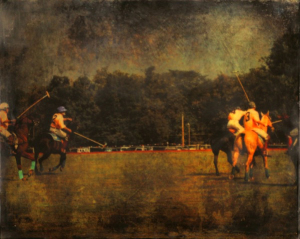Work with images you DON’T love.
Sounds a little crazy. I know.
As I’ve said before, working with encaustic can be frustrating and messy, requiring us to struggle with molten beeswax, potentially harmful fumes and sometimes cumbersome and frightening equipment.
So why do it?
Simply….it’s intoxicating.
Otherwise why go to all the trouble to manipulate and create layers of subtle coloration and atmosphere. Why thrive to build a finished surface that is uniquely transparent and tactile making the work ethereal and solid all at once. This process is a constant push and pull—carving, polishing, molding, painting, and sculpting—leaving an active surface that’s sensual and contemplative.
We see photo encaustic work and we are drawn to it. We want to learn the process—we want our own images to change, adapt to the wax, and evolve.
Problem being as photographers we frequently fall in LOVE with our images. They bring us back to a time or a feeling or a place when we took the image. We spend hours and hours in Photoshop manipulating layers and in essence we don’t want to do anything to ‘wreck’ our images. We like them as they are.
Great. Print them and put them behind glass.
But if you want to work in encaustics, you have go to let that go. Push yourself out of your comfort zone. Otherwise why go to all the bother of working with encaustics. And no, putting a thin layer of wax over a photo and calling it ‘done’ is not creating an encaustic photo.
I get it. It’s hard.
So my advice to you is to start with a photograph that you DON’T love. Use an image that allows you to push beyond your comfort zone. See where you can take it. Don’t rely on Photoshop to create your layers. Create them with the wax and imagery. Let the light bounce around between the layers and marvel as people are drawn to your work in an altogether different way. That’s the real reason we put up with all the hassle—to create three-dimensional images with luminosity and texture.
I was looking at some recent work by Tanya Dobbs and was struck by this image. Instantly I knew that the original was probably a photo that you’d never take a second look at. Yet it comes to life with the addition of the beeswax and pigments. It now feels like there is a sense of history and timelessness to the image.
And don’t forget, if you go too far you can always scrape it back or start over. But you will have learned something along the way—and that is incredibly valuable.
Tanya’s finished image. Thank you Tanya for allowing me to show your process.
I’d love to hear from you in the comments below. Are you tempted to play it safe because you LOVE the image as it is? Is it easier to work on images you are less emotionally attached to?
Be well….be creative,


Ah, this is so true! Starting with an image you don’t love is an interesting way to approach it. For learning purposes, I’ve also discovered another trick. Once I “ruin” a photo I did love, I just say, “To heck with it!” and use it as an experimental board to see how far I can push it and play. Often I’ll end up with something totally abstract or a piece that looks more like a painting, with no sign of the original image in sight. Most of the time I do end up scraping or melting it off, but occasionally I end up with something I really like. Either way, as you say, I learned something new in the process. Thanks so much, Clare.
This is a fabulous image. I am trying to push myself a bit farther with my work as well. As always, thank you for your thoughts.
Thanks Clare. Excellent advice for all aspects of this medium.
Thank you Clare. The transformation of the image is striking.
I am in process of creating a piece for a coworker with one of his photos. I asked him if he wanted representational art or abstract or what? and he said . . . “just do your majic” and I said your giving me “license to thrill?”
So this came at the right time, as I am laying out my image on the substrate trying to decide how I am going to work it. My image has a lot of dark area as well so this is inspiring me to when I saw the outcome of Tanya’s work.
What a wonderful transformation. It is great to see what is possible with a photo that looks average. Tanya has made her work look amazing.
Appreciate the recommendation. Will try it out.